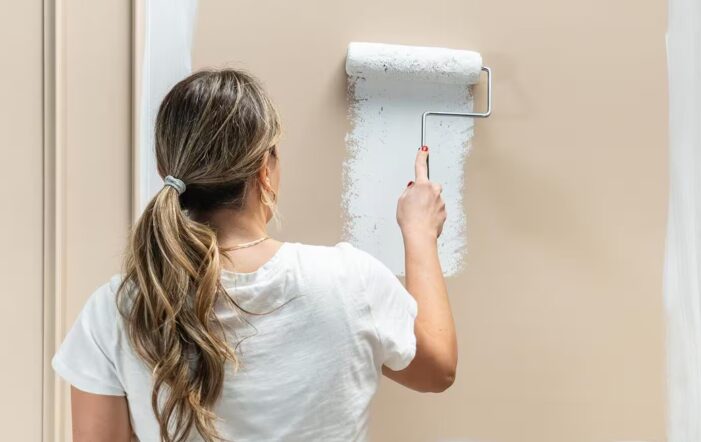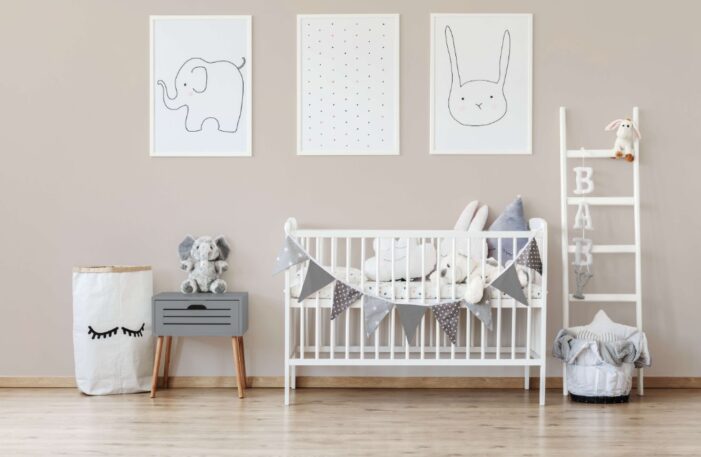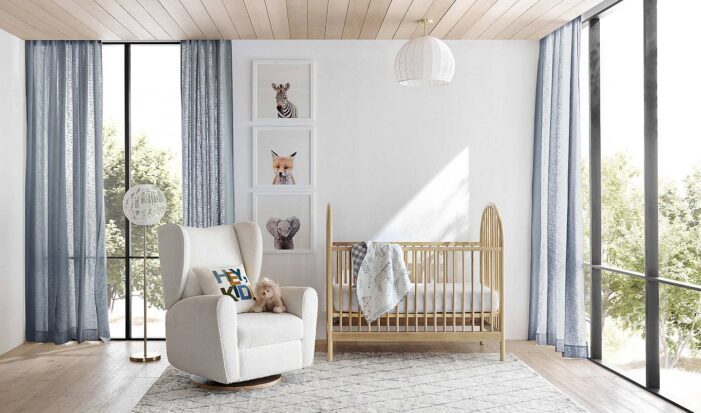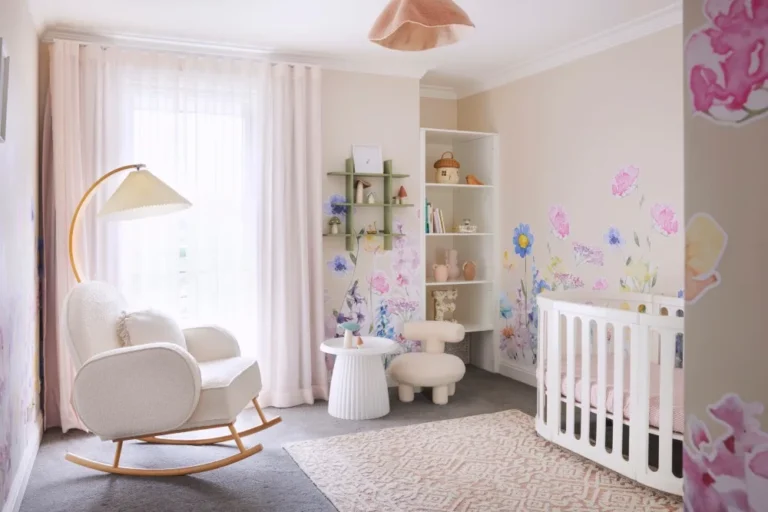As new parents, we find comfort and peace inside our bedrooms. This is a place for rest, recreation, and relaxation. In very special moments like co-sleeping naps, midnight feedings, and tending to your baby, a peaceful bedroom plays a crucial role. But many parents aren’t aware how their bedrooms could affect their rest and their baby’s quality of sleep as well. This is why many parents who want to re-paint or re-think their bedroom setup often ask, what’s the best color for bedroom walls, bedding, and decor?
It is true that colors have a direct impact on mood, sleep, and even the way it makes you feel when you walk into a room. And once you pick the ideal color for your room, this will instantly make a positive effect on having that serene setting for you and your baby. Throwing in the appropriate accessories, such as a soft mattress, warm lighting, and even a supportive breastfeeding pillow, this could turn your room into a soothing retreat for the family. Let’s discuss how colors affect sleep and how you could pick the perfect palette for you.
Understanding the Psychology of Color for Sleep
What color psychology does show us is that the various color shades can have an impact on emotions, energy, and sleep patterns. For adults, the wrong color can leave you feeling restless at night or throughout the day; for babies, it could affect how easily they settle down at night.
- Cool colors such as blue, green, and lavender have been found to slow the heart rate and induce relaxation.
- Warm hues such as oranges and reds are energizing, and they tend to be associated with higher energy levels than calming.
- Neutral colors help provide balance, creating a versatile and timeless sleep space.
Parents who spend most of their hours in the bedroom, feeding the baby with a breastfeeding pillow, rocking them back to sleep, or trying to catch quick naps benefit from these calming tones, which encourage restfulness.
The Soothing Spectrum ─ Why Cool Colors Reign Supreme

If you’re planning on re-painting your bedroom walls and want that calming mood, the cool shades are on top of the list.
- Blue is universally known for calmness; the color blue lowers blood pressure and slows down breathing. Studies show that people with blue bedrooms sleep longer than most people.
- Green is symbolic of nature, green creates that fresh, restorative vibe, which is especially helpful for parents who want to feel grounded after chaotic days.
- Lavender is the softer version of purple, and it has a gentle, soothing quality for our eyes, which stimulates relaxation.
These shades are also ideal for nurseries or any shared space; they help set the stage for calmer bedtime routines. Picture yourself through the late-night feedings with your baby snuggled on a breastfeeding pillow amidst a peaceful, blue-hued room. It winds the baby down easily and keeps that comforting feel.
Creating Warmth ─ When to Use Cozy, Earthy Tones
With all the misconceptions surrounding warm colors for the bedrooms, we may think that they are the ultimate no-no, but when warm tones are used in the perfect shade and in a thoughtful manner that complements the cooler tones. They could help make the vibe of the room cozier and nurturing. So, warm tones aren’t necessarily a no-no; you just have to look for the shade that would work best for you. Here are some colors that are a great example:
- Soft terracotta or peach is a gentler version of red and orange, which provides warmth but not too overwhelming that it is stimulating and emulates energy.
- Muted yellows bring sunshine indoors; it helps create that cheerful morning atmosphere while staying as gentle as possible for sleeping.
- Warm beige or tan, this color may be neutral, but it is comforting; this is perfect for accent walls or furniture.
For sleep-deprived parents these comforting colors help during those long nights. Picture a soft cream-colored room with a rocking chair with your baby wrapped in a blanket, and you supported by a cushioned breastfeeding pillow, it feels like a warm yet comforting home.
The Power of Neutrals ─ Finding Calm in Whites and Grays

If you’re still undecided which color tones to go for, you could never go wrong with neutrals. They are the safest choice of colors that most people use for their bedroom walls. Going for different shades of whites, creams, and grays offers that certain versatility, which allows you to change and match the accent colors easily with more options as well.
- White looks clean and crisp, though this is best softened with textiles to avoid the sterile feeling.
- Gray gives a calm and sophisticated look, especially when paired with soft pastels.
- Cream or ivory are warm neutrals that add to the coziness without overstimulation in the picture.
Choosing to color your nurseries in neutrals makes additions of accents and decor easier. For example, a white or gray bedroom provides a perfect backdrop for nursery essentials such as cribs, a hanging station, or even a breastfeeding pillow in a fun print. These small touches of bold and light colors bring life into the room without clashing with the colors of your wall.
Beyond the Walls ─ Using Color in Bedding and Decor
There are a lot of factors that you should consider when you’re choosing the best color for your bedroom. From bedding, curtains, rugs and decor, they will contribute to the overall mood of your room.
- Curtains – blackout curtains in neutral or cool shades help regulate the baby’s sleeping schedule.
- Decor – subtle pops of colors help, like lavender pillows or green plants, they bring the fun factor without overwhelming the space.
- Bedding – soft blues or whites are perfect for calming sleep. For parents, a high-quality sheet can make those middle-of-the-night wakings more bearable.
This is where you can personalize your bedroom for parenting. If, for example, you’re fond of bright and bold colors, you can always incorporate them in small comforting accents, like a pastel cover for your breastfeeding pillow or a cheerful rug by the crib.
Lighting and Its Effect ─ Making Your Color Palette Shine

Different colors appear differently in certain lighting. Natural daylight, warm lamps, or cool LED bulbs will all affect how different shades appear through the eyes.
- Warm lighting soften cool shades which makes blues feel cozier.
- Cool lighting enhances whites and grays which creates a modern look.
- Dim lighting such as nightlights or low-watt bulbs is essential for late-night feeds, helping soothe both the baby and the parent without overstimulating.
Understanding the proper lighting is just as important as choosing your color. Imagine when you’re up in the middle of the night and feeding, a gentle warm lighting helps keep the room calm and baby-friendly.
Finding Your Perfect Shade ─ How Personal Preference Matters
This psychological research is just a guide for you, and the best color for your bedroom will ultimately depend on your personal preferences and needs.
- If, for example, you’re more drawn to the ocean, a soft blue color will make your room feel like a sanctuary.
- If nature grounds you, green is the color to go.
- If what you crave is coziness, warm, earthy tones would just hit the spot.
As a parent, your bedroom should reflect comfort for you and your baby. Whether this means neutral walls paired with colorful bedding or a lavender room with soft cream accents, the ultimate goal here is to create that restful space for you and your child.
While enjoying the current stage of parenthood, don’t forget to think of the long-term, too. Babies grow quickly, and so will their routines and timeless color schemes ensure that bedrooms adapt to your changing lifestyle. It could be from nursing in the early days with a breastfeeding pillow or reading bedtime stories later on.
Final Thoughts
So, what’s the best color for bedroom spaces? The answer will depend on balancing the science with your personal style. Cool colors such as blue, green, and lavender is still the most preferred for a peaceful sleep, warm earthy tones work towards creating warm spaces, and neutrals offer versatility and tranquility.
For parents, these choices are not solely for aesthetic purposes but it’s the thoughtful thinking of providing that space for you and your child to relax, bond, and have a fulfilling rest. Including the proper accessories, such as comfortable bedding, soft lighting, and a comfortable breastfeeding pillow, your bedroom will become a haven of peace and tranquility.
At the end of the day, your bedroom is the place where precious memories are made, late-night feedings, first giggles, and those rare but blissful stretches of uninterrupted sleep; they grow to be the fondest memories. This is why choosing the right colors for your bedroom would help set the tone for it all.

